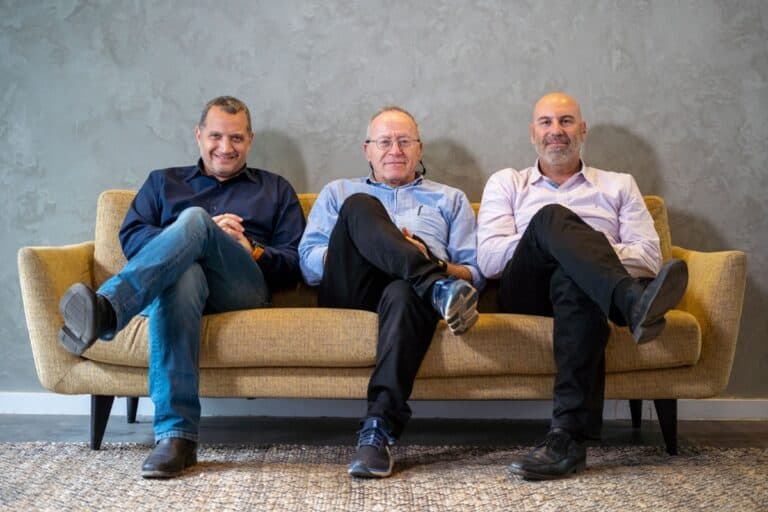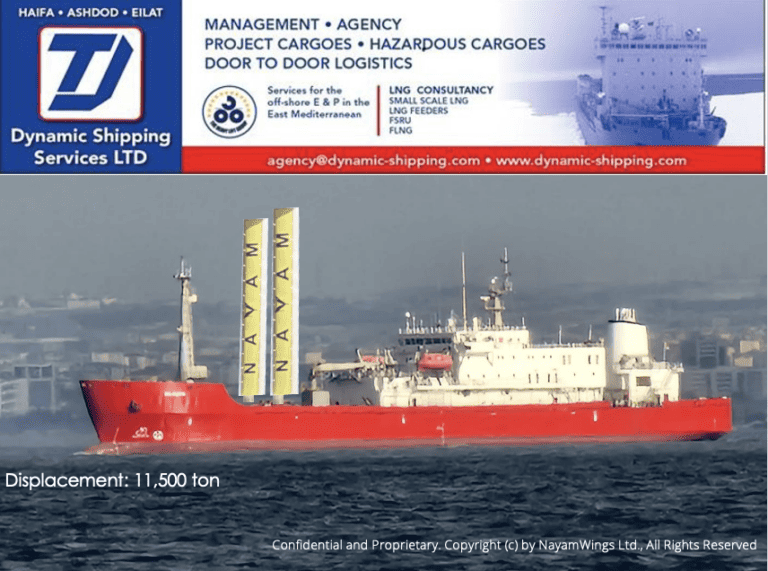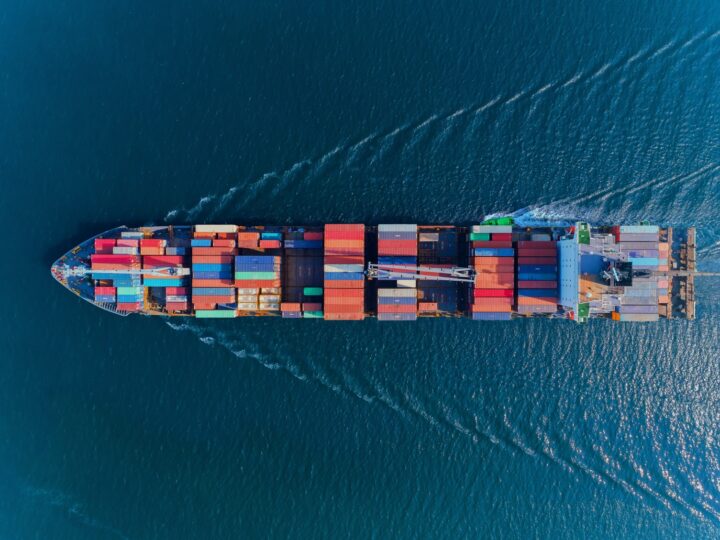In the world’s increasingly desperate pursuit of ways to reduce the polluting emissions from oil-powered vehicles and to mitigate the ravages of climate change, shipping remains one of the hardest rocks to crack.
Haifa-based NayamWings has a novel method to reduce emissions in the shipping industry by tapping into the wind power.
Wind as a renewable energy source has an advantage over solar in that it blows day and night and doesn’t requires storage.
But what’s the best way to capture wind on a ship to use it for propulsion? Do you put giant windmills on a huge container vessel crossing the Atlantic?
Sort of, says Saar Carmeli, NayamWings’ CEO and one of three cofounders along with Amnon Asscher and Avishay Parker.
Asscher, NayamWings’ CTO, adapted the technology and aerodynamics of airplane wings to be suitable for a marine system. These newfangled marine wings are affixed to the deck of the ship.

“I’m an aeronautical engineer and an experienced sailor,” Asscher tells ISRAEL21c. He and Carmeli spent many years in the Israeli navy.
“A few years ago, I started to think about how to add the technology of aircraft, which has a much higher lift force, to maritime vessels,” he continues.
Turning ‘lift’ into forward motion
“Lift” is achieved by shaping the wings so that air moves faster over them, thereby reducing air pressure on the top. The difference in pressure between the top and bottom of the wing creates a force that lifts the wing into the air.
For ships, Asscher positioned the wings vertically, so the wind could induce forward motion.
NayamWings’ wings “are three-and-a-half times stronger per square meter than simple sails,” Asscher says. That gives NayamWings a wing up, so to speak. According to Asscher, no other company addressing emissions in the maritime industry has deployed airplane-like wings on a ship.

What makes NayamWings’ method more effective for wind propulsion? There are three main factors.
First, computer algorithms and machine learning sense which way the wind is blowing and pivot the wings to take advantage of the best angle.
“The wing is autonomously adjusted in three dimensions, so that in every second you have the optimum forward propulsion,” Asscher explains. “You don’t need any special crewmembers onboard to operate it.”
Second, the wings are asymmetrical. That makes it possible for the wind to move faster at the broad top of the wing and slower at the bottom (or the sides, in a vertical orientation), creating the necessary lift.
Nayam, by the way, isn’t a real word in Hebrew or English. It is a combination of Asscher’s two children’s names: Yanai and Maayan.
Compared to competition
Saar likes to refer to competing sail systems as “partners” in terms of educating the market, rather than threats. And NayamWings has plenty of such partners – including Norsepower, Anemoi, Yara-Bar, OceanBird, EconoWind and NewoLine – but none have NayamWings’ asymmetry. Some use cylinders with rotor technology. Others use suction foils.
All those approaches are better than a regular sail, but only provide about double the effectiveness, not 3.5 times as with NayamWings’ design, according to the company.
Finally, NayamWings’ wings are not made of cloth or nylon but of rigid carbon fiber.
“They don’t move, they don’t flap around,” explains Carmeli. “When you have a soft sail, it might make waves. And then the airflow doesn’t go straight. You get turbulence. All this lowers the forward propulsion.”
Flat-deck ships – the ones that transport consumer products from one continent to the next – represent some 90% of all ships, Carmeli says. There are around 35,000 ships that are suitable for retrofitting with a NayamWings system – representing a $100 billion market – and another 1,500 new ships built each year that could be outfitted with a NayamWings system from the get-go, the company says on its website.
How much will NayamWings’ solid sail approach reduce emissions?
Carmeli says a NayamWings system, retrofitted onto an existing ship, can lower emissions by around 15%. On a brand-new, purpose-built ship, Carmeli estimates the reduction could be up to 35%.
That’s a good start, but what can be done to meet the higher carbon reduction agenda set by the European Union and the International Maritime Organization? For instance, the EU’s “Fit for 55” regulation aims to impose by 2030 a 55% reduction on CO2 emissions from a climate baseline set in 1990.
“It will be some combination of technologies, led by wind propulsion, which is the most effective and most powerful, and can include solar and biofuels made from waste,” Carmeli says.
Ship emissions are growing
Emissions from ships are among the worst in the world. The Economist reports that 15 of the biggest ships alone emit more nitrogen oxide and sulfur oxide than all the world’s cars put together.
Moreover, shipping is the only form of transportation today where emissions are growing. The IMO estimates that by 2050, there will be three times as many products traveling by sea than there are today.
“That means three times more emissions. It’s very close to a linear increase,” Carmeli notes.
NayamWings has a team of six including its three cofounders, and has offices near the port in Haifa.
NayamWings has built two proofs of concept – an eight-meter wing operated manually and a smaller three-meter model that can act autonomously. The company is seeking to match a $1.5 million grant by the Israel Innovation Authority to build a full-scale prototype.
Carmeli notes that NayamWings has two letters of intent with shipping companies “that want to receive the first full installation,” which Carmeli estimates could be as early as next year, pending funding.
It’s not just huge ships with thousands of containers that could benefit from wind propulsion.
“I spoke with a huge cruise line operator,” Carmeli says. “They told me that, by 2024, they will have paid more than $800 million in fines because of the carbon intensity index. NayamWings’ tech can be installed on cruise ships, too.”
Asscher for his part hopes that the technology his company is building will find its way into one more type of ship: yachts. Asscher can be found frequently out on the Mediterranean in his own yacht. “Yachts can easily replace their soft sails with our wing,” he tells ISRAEL21c.
It might look bizarre – a small yacht with a huge vertical airplane wing – but if it’s for the good of the planet, and can lead to bigger savings on the high seas, we’ll be forgiving.
Want to know which way the wind is blowing? Click here.















